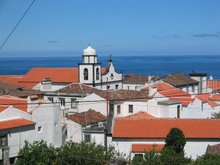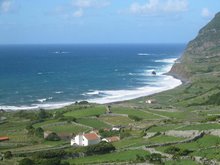To understand the history of Britain in the 9th to 13th centuries, you have to imagine two regional "superpowers" - Alba in the north and Wessex (the embryo of what was to become England) in the south - and their interactions with surrounding smaller statelets. You can add Norway as a third superpower due to the Viking settlements in the British Isles at the time.
In a process stretching over 400 years, Alba and Wessex gradually swallowed up weaker neighbours, kept Norway at bay and ended up as Scotland and England eye-balling each other over the medieval Iron Curtain of the Solway-Tweed line.
That would be a good point to stop reading if all you need is an executive summary of the early Middle Ages until you get to more interesting bits like Wallace and Bannockburn.
 But as for the detail, as this is history without looking it up, all I can remember of the key landmarks of the consolidation of Alba/Scotland is:-
But as for the detail, as this is history without looking it up, all I can remember of the key landmarks of the consolidation of Alba/Scotland is:-1018 - King Kenneth II (I think) of Alba defeats the Angles of Northumberland at the Battle of Carham on the River Tweed and extends the south east boundary of his kingdom to the Tweed.
1034 - King Duncan (he who Shakespeare had murdered by MacBeth) of Alba also becomes King of Strathclyde. With its capital on Dumbarton Rock, this was the last P-Celtic kingdom in Great Britain outside Wales and Cornwall. It had kings with names like Owain and Rhodri so thank goodness that sort of nonsense was stamped out in 1034 when Strathclyde became part of Scotland.
There's no unanimous academic opinion on when "Alba" fledged to become "Scotland" but I personally regard it as being the mid 11th century when it looked like this:-
Alba/Scotland is the pink bit. Above (purple stripes), is Moray which had a very ambivalent and not well understood relationship with Alba/Scotland. West and north (green) you've got the Earldom of Orkney and the Kingdom of the Isles under the suzerainty of Norway. Galloway in the south west (yellow) stubbornly independent.
1093 - King Edgar I of Scotland and King Magnus Barelegs of Norway do the famous "Everything you can sail your boat round is yours" deal. This is the episode you learnt about in Primary 6 when Magnus got his chaps to carry him in his boat over the isthmus at Tarbert and thus claim Kintyre. It's apocryphal, of course - Scandinavian history is littered with similar tales across the Viking world. The result was that Norway conceded the mainland to Scotland while keeping the islands. But the reality was more like Dutch and Greek UN peacekeeping generals deciding zones of operation in the eastern Congo ...
1124 - I have in my mind as the year in which an infant girl had her brains smashed out on the mercat cross of Forfar on the orders of King Alexander I of Scotland, her crime being to be the Anastasia Romanov of Moray. In other words this is when Moray's pretensions to independence from Scotland finally end after much strife.
1093 - King Edgar I of Scotland and King Magnus Barelegs of Norway do the famous "Everything you can sail your boat round is yours" deal. This is the episode you learnt about in Primary 6 when Magnus got his chaps to carry him in his boat over the isthmus at Tarbert and thus claim Kintyre. It's apocryphal, of course - Scandinavian history is littered with similar tales across the Viking world. The result was that Norway conceded the mainland to Scotland while keeping the islands. But the reality was more like Dutch and Greek UN peacekeeping generals deciding zones of operation in the eastern Congo ...
1124 - I have in my mind as the year in which an infant girl had her brains smashed out on the mercat cross of Forfar on the orders of King Alexander I of Scotland, her crime being to be the Anastasia Romanov of Moray. In other words this is when Moray's pretensions to independence from Scotland finally end after much strife.
116? - Galloway's pretensions to independence are crushed. I forget the detail now.
1266 - Norway cedes the Western Isles to Scotland. This followed the Battle of Largs in 1263 in which a Norwegian fleet attempting to assert suzerainty over the Western Isles was defeated by bad weather more than anything else. A bit like Scotland qualifying as a result of Andorra holding Moldova to a draw but Norway recognised it could not hold on to such far flung territories long term. Orkney and Shetland remain Norwegian till 1468.
That's skipped lightly over 400 years. I think I'll need to come back and fill in some intervening details in later posts.





No comments:
Post a Comment